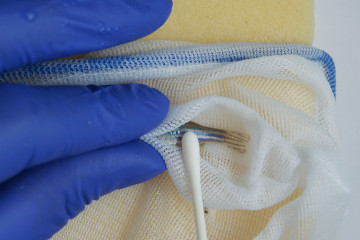Project grant
Quantifying the potential of skin swabbing as a refinement for DNA sampling of laboratory fish

At a glance
Completed
Award date
December 2017 - March 2021
Grant amount
£258,803
Principal investigator
Dr Will Norton
Co-investigator(s)
Institute
University of Leicester
R
- Refinement
Read the abstract
View the grant profile on GtR
NC3Rs gateway article
Read the methods on F1000Research
